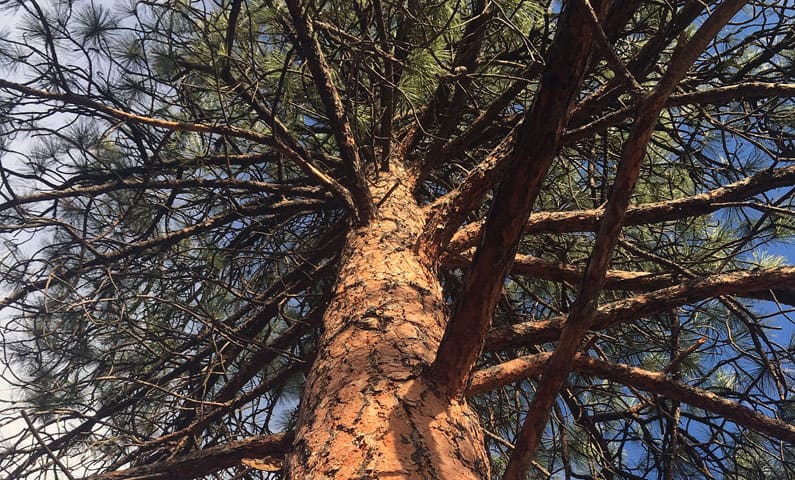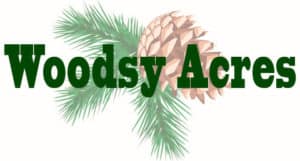
The first year of owning our pine woodland property I noticed during the fall months there was a tremendous amount of pine needles falling from the trees. I thought to myself, I wonder if there are any uses for all these needles, and after doing some reading here’s what I found.
Pine straw is made up of pine needles that a pine tree sheds every fall. It is often raked up and made into bales so that it can be sold as a mulch for gardens and home owner’s landscapes through either gardening stores or landscaping companies.
Although there are many different species of and size three most common types of pine straw are loblolly, longleaf, and slash pine needles. The loblolly and slash are pretty close to being the same with needles upwards of 9″ long and gathered in the late fall whereas the longleaf has needles that are about 14 inches long and can be harvested twice a year, once in the summer and again in the fall.
Is Pine Straw Better Than Mulch?
In many ways, pine straw mulch is better than most other forms of mulch. One of the most significant benefits to pine straw is how long it takes to decompose. Due to a natural wax type coating on the needles, it takes anywhere from three to five years for the pine needles that makeup pine straw to decompose. You can even use pine straw right over other mulches. Due to the needles interlocking attribute it locks in-ground moisture as it blocks sunlight keeping weeds from growing. Unlike other composting products pine straw is perfect for erosion prevention and does not blow away easily in heavy windstorms or wash away in heavy rain. It doesn’t compact down like other mulches, so it promotes healthy soil.
Because pine trees shed their needles (leaves) each year no trees are cut down or harmed in the harvesting process making it an eco-friendly organic product.
How Long Does Pine Straw Last?
As mentioned earlier it takes pine straw three to five years to decompose but can easily be replenished. Just add an extra inch of pine straw over the already existing straw to provide a refreshed appearance. Just be careful as to not accumulate more than around four inches of pine straw. Doing so can cause water to not reach the roots of the plants the mulch is supposed to be helping. Around flowers, you want to use even less, around two inches.
How to Find Pine Straw
If you do not have or know someone with a pine tree that produces longer needles then you’ll have to buy them. Pine straw is typically sold in bales and carried by local garden centers, landscapers, or nowadays through the internet if you’re willing to pay for the shipping.

How is it Harvested?
Pine straw harvesting, is typically raked annually by hand for smaller bales and placed into a handmade baler. This type of baler is usually made out of wood and sits stationary in one location. For larger operations a mechanical system which includes a special rake behind a tractor pulling the needles into piles. Then a baler, like found on farms, creates larger bales typically used by commercial businesses like stores and large landscaping businesses.
How Much Area Does a Bale Cover?
Bales come in different sizes but two common sizes include a smaller square bale measuring approximately 14×14 by 28 inches long and a larger round bale at 18″ in diameter by 28″ tall. The small square bale should cover between 30 and 40 square feet at 2.5 to 3 inches thick. The larger round bale should cover 100 to 120 square feet at the same thickness. The approximate weight for the smaller bale is 15 to 20 pounds with the larger bale weighing approximately 40 pounds. In most cases, the larger bales are going to be the best choice for a higher amount of coverage.
How Much Does It Cost?
The price of pine straw hasn’t changed a whole lot over the years and seems to still be holding even now.
Small Bales will cost somewhere around $3 to $5 each
Larger Bales will cost somewhere around $5 to $9 each
That’s $.12 to $.17 per square foot with a 3″ thickness. Compared to wood mulch being $.24 to $.30 per square foot and decomposes much faster.
TIP: If you’re going to use pine straw on a sloped grade to help with an erosion issue it’s best to not use anything like a plastic tarp or weed blocker under it to prevent it from sliding off.
Does Pine Straw Make the Soil More Acidic?
For the longest time, I thought needles from pine trees were the cause of grass or other plants not growing under pine trees I had in the yard. I was told that the soil under the tree was too acidic from the acidity of the needles falling to the ground.
After reading about some studies done I found that although pine needles do have a pH level of 3.2 to 3.8 because they rest on top of the soil they have no direct impact. Even if the freshly fallen needles were ground up and turned in with the soil, the pH would only slightly drop to a level that isn’t dangerous to other plants. In fact, as pine needles begin breaking down into compost their pH level changes to right around 7 which is neutral.
Another Money Making Option
For us, we have lots of Ponderosa pine on our property. If we were to so choose, we could make money from pine straw. Each year starting around October we would start the process of raking up the needles. Then using one or more wooden balers start compressing and tying the needles into bales using twine. Once tied up and stacked we would start the process of selling to the public.
Because you can only expect 70 to 120 bales per acre, the revenue earned would be a good substitute for other avenues of income you can make with your property. Read more about making money in this article: Can I Make Money From My Wooded Property?
Other Asked Questions About Pine Straw
Is pine straw good for dog bedding? YES – Although pine straw has no absorption properties and unlike some wood shavings it does not offer any odor control, it will provide an insulated cushion for dogs.
Is pine straw good bedding for chicken coops? YES – Pine straw is another good bedding source for the bottom of the chicken coop. It provides about the same benefits that regular wheat straw provides only a lot less expensive. Especially if you have a natural source on your property that’s readily available. However, for the chicken nesting box, it’s best to use either wood shavings, regular straw or hay.
If you enjoyed reading this, please check out other articles on this website of Woodsy Acres. Thank You!
